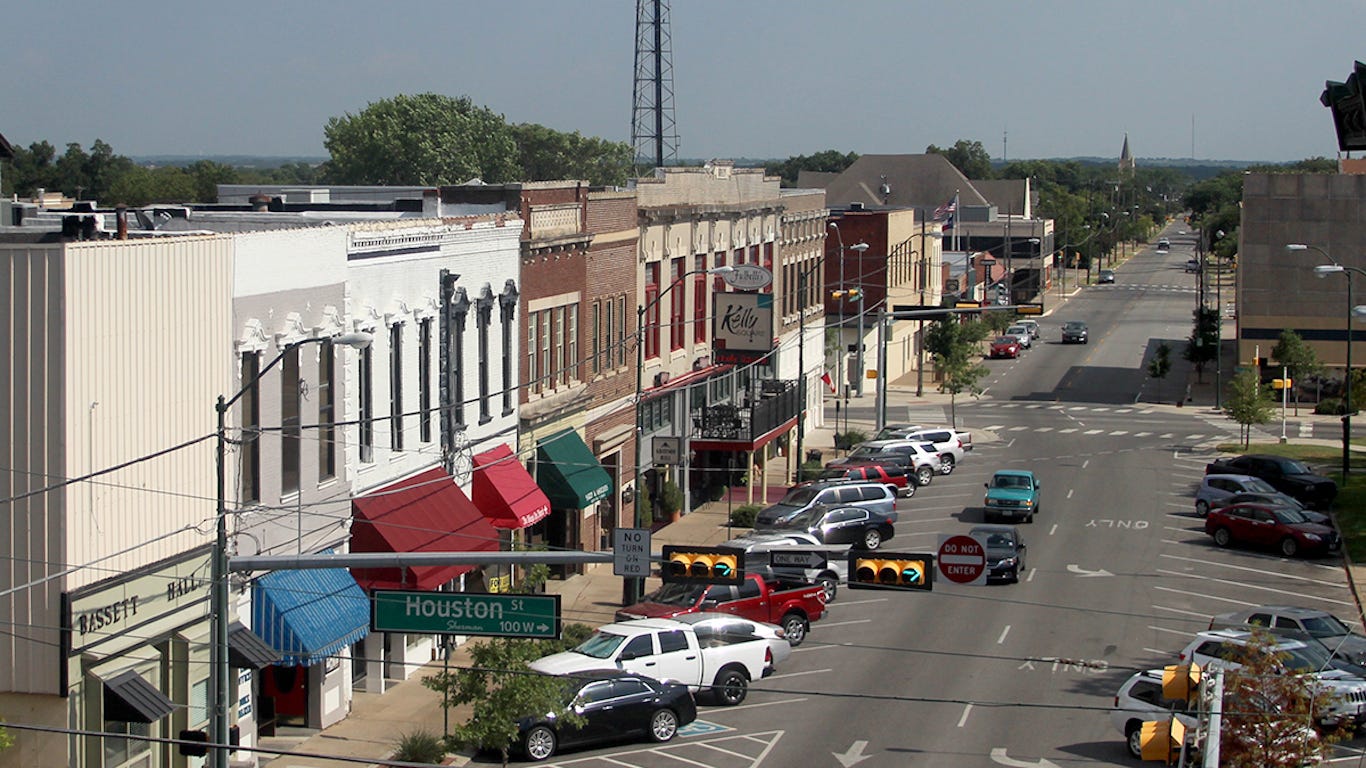Texas History: Readers trumpet their own Texas town names
 Michael Barnes
Michael Barnes
- A Panhandle town comes with the charming name Coble Switch.
- How would you like to live in a place called Nameless?
- Don’t mix up Dime Box with Old Dime Box.
In honor of Texas Independence Day, we return to the primal subject of Texas place names. Some of you have seen the following correspondence about Texas towns and cities in the introductions of the past two Think, Texas free digital newsletters. Today, we share with a wider audience, including the print readers, responses to the Feb.1 story, inspired by “Texas Place Names” by Edward Callary with Jean K. Callary (University of Texas Press).
Donna Dove: … By the way, Coble Switch was, as you probably imagined, named for a Mr. Coble who owned most of the land and a railroad switch. This switch was located at the only two roads going through the town of about three or four families, depending on ginning season.
Texas History:12 books about how modern Texas was built
Mary Cameron: I live on Nameless Road in northwestern Travis County. Down the street is Nameless School, the last one-room schoolhouse in Travis County. At the school are the steps from the old Nameless Post Office, which was up Lindeman Lane.
Story goes, the good folks out here originally called their community Fairview — that name is also on the school sign — but when it came time to get a post office, that name had already been used. The Fairview residents submitted several other names, to which the powers that be said those names were also already in use.
So, Fairview said: "Fine, we'll just be nameless!" And the postal officials said "Great! You can be Nameless and be damned!" I've taken latitude with some of the conversation, but the words in general are on our historical marker.
Michael Brinkman Stevens: Enjoyed the story on how towns were named, but there's an interesting town in Lee County omitted from the article: Dime Box, located on Texas 21 pretty much halfway between the University of Texas and Texas A&M University. I grew up in Deanville, a nearby town.
Actually, there are two names associated with the town: Old Dime Box on Texas 21 and Dime Box, just to the south and where the post office and school are located. There are various theories about the naming of the town(s), but I subscribe to the one from my grandmother, who lived there all her adult life, having grown up in a nearby town:
Back in the "old days," farmers and their wives spent almost their time on the farm, providing for themselves and making a living from what they sold. Many of these farmers and their wives had a habit called "dipping," meaning they used snuff. When they ran out, instead of running into "town" to buy more, they worked a deal with the postman: He carried tins of snuff along with the mail, and if he found a dime in their mailbox, that meant they were running low on snuff, so he would take the dime and leave the mail, plus the tin of snuff in the mailbox, thus keeping them sufficiently supplied until their next trip into "town."
More:‘A natural-born progressive’: Enter the modernist world of Texas Black architect John S. Chase
Cliff Tyllick: I once worked for the Sherman Democrat, and then the Sherman-Denison Herald Democrat after the two consolidated, helping the sports editor cover local football each fall. … Denison was also named after a railroad executive — George Denison, vice president of the Missouri-Kansas-Texas (Katy) Railroad. The story behind the founding of that town has something to do with the leaders of Sherman not being willing to meet demands of the M-K-T for setting up a depot on their new line and the railroad responding with the usual, "We'll just found our own town and run the route past you."
Also in that part of the state, Melissa might have been named after the sister of the namesake of Anna. The Handbook of Texas says Anna was either Anna Quinlan or Anna Huntington — or Anna Greer, who was the wife of the first person to build there and might have been born Anna Quinlan, and that Melissa was named for either Melissa Quinlan or Melissa Huntington.
The proud papa was either George Quinlan, who was an official with the Texas and Central Railway, or C.P. Huntington, who was an executive with the same railway. I haven't found anything claiming that one was named for a Quinlan lass and the other for the complementary Huntington girl, but I haven't found anything refuting that possibility, either.

I'm sure you'll hear from readers in Brownwood, if you haven't already, that it and the county were named for an early settler and trader, Henry Stevenson Brown. Brown was a veteran of the War of 1812 and, having arrived in 1824, participated in a number of the events behind the settling of Texas. He died July 26, 1834, so unlike so many who got counties named for them he was not in the Texas Revolution.
No word on why "wood" was added to get the name of the town. For that matter, I can't figure out why either the county or the town would have been named for Brown. Although he did lead a group of Anglos through the area on a foray to recover livestock stolen by Comanches in 1828, and traveled a lot, he seems to have been based in Brazoria. The county and town were both founded in 1858, and Brownwood's first postmaster was Wiley B. Brown; was he perhaps a son or grandson of Henry Stevenson Brown?
Texas history, delivered to your inbox
Sign up for Think, Texas, a newsletter delivered every Tuesday, at profile.statesman.com/newsletters/manage. And if the weekly email just isn't enough, there's more. Follow Michael Barnes on Twitter: @outandabout. Miss a column? Check out the Think, Texas archive at statesman.com/news/austin-history.